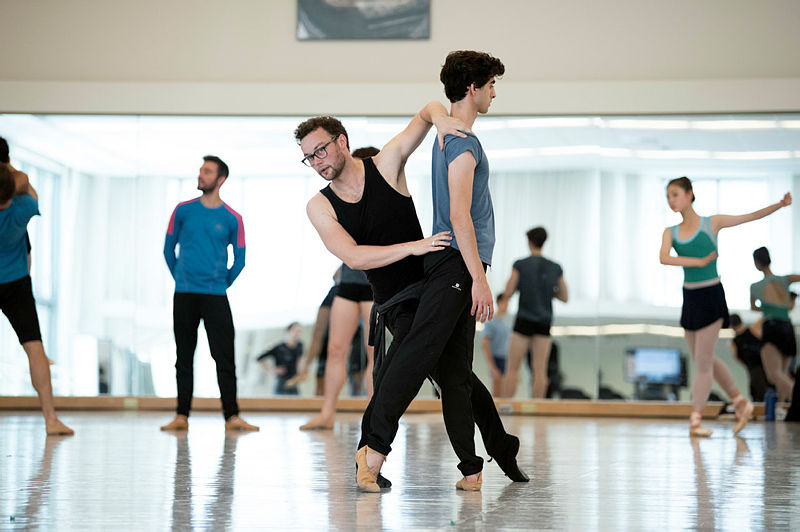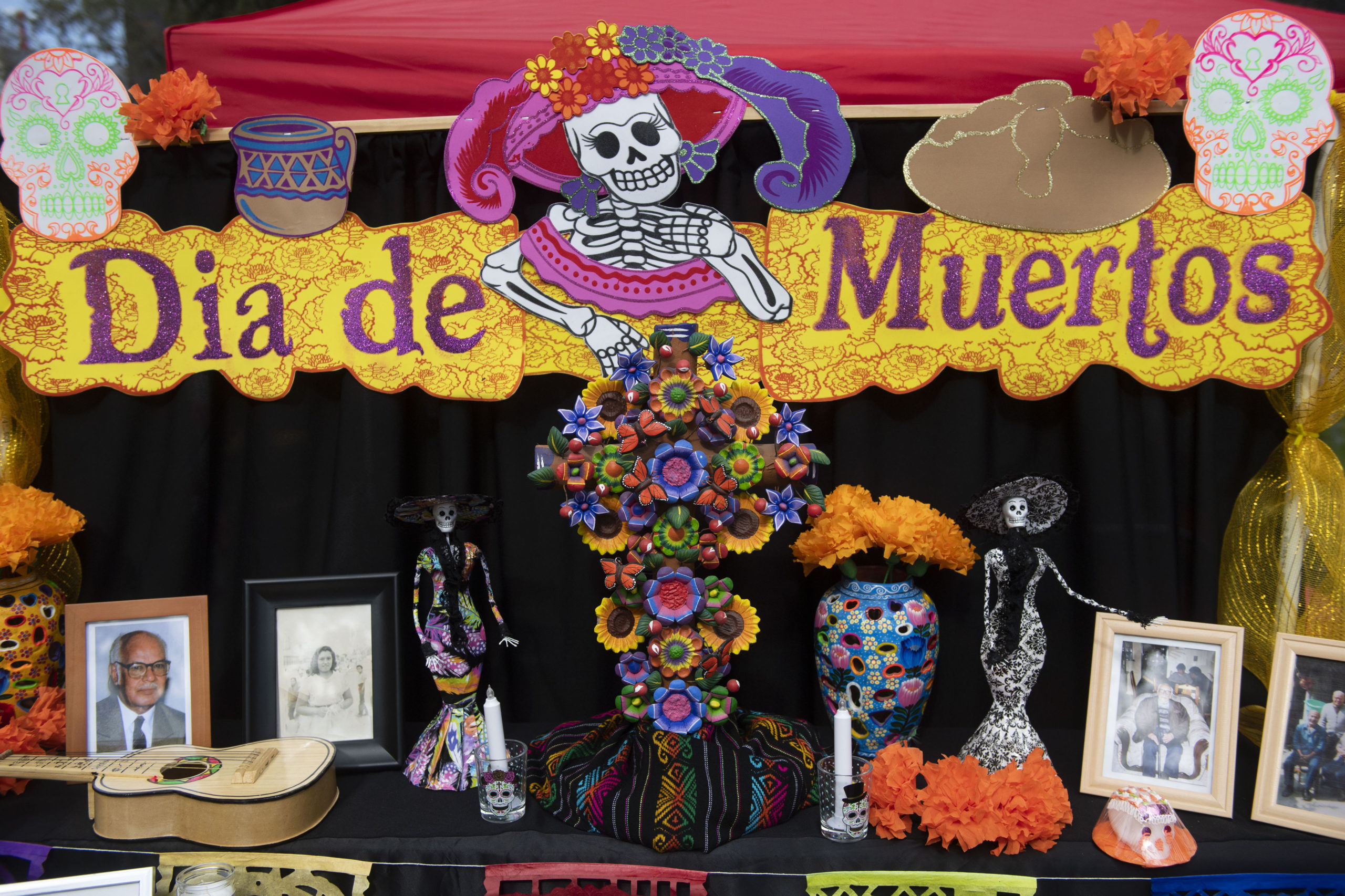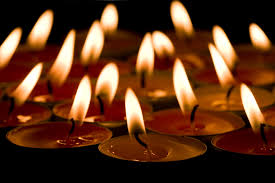You’ve quite possibly seen a copy of “Isle of the Dead,” a painting by Swiss symbolist artist, Arnold Böcklin. The dreamy, haunting portrait depicts a small rowboat traversing a lake. In the boat a figure shrouded in white stands, transporting a draped coffin, as the rower behind steers the boat to shore, a rocky island dominated by steep cliffs and cypress trees. Böcklin created this painting in 1880, a commission by his patroness as a memorial to her late husband. According to The Metropolitan Museum of Art, it’s based on an unfinished canvas that she saw in his artist’s studio; at her request, he added the draped coffin and the shrouded figure to the rowboat in the foreground. The end result was so popular that Böcklin painted three additional versions from 1883 to 1886, each slightly different.
Story has it that in 1907, composer Sergei Rachmaninov spied a black and white reproduction of the painting and was deeply affected, seized with an irresistible, almost mystical urge to compose a symphonic poem based on it, which he did. An interesting aside here: when he saw the color version later, he was oddly disappointed, and said, “If I had seen first the original, I probably would have not written my ‘Isle of the Dead.’ I like it in black and white.”
I’m glad he did. Every year around this time, I consult my “10 spooky classical faves for Halloween” blog. How powerful “The Isle of the Dead” is, the combination of the image and the music. It takes me somewhere very spooky. Wrong word. It gives me a glimpse of something unknown, if not Death, certainly the gravitas and sorrow that precedes it. It’s a lot like Schubert’s “Death and the Maiden,” which I blogged about HERE.
Time to give it a listen. It helps, by the way, if it’s Halloween or close to it. Regardless, don’t rush this. Close the door (with your phone on the other side of the door) and make yourself comfortable. Shut your eyes and melt into a somber, otherworldly journey.
Gripping, huh? I find it both exhilarating and draining to listen to. It’s like I really have gone somewhere else.
This year, I idly wondered, while listening, if anyone had set a ballet to this music. The answer: yes. And I was staggered to discover that the San Francisco Ballet, “my” ballet company, had presented it, and further, that I’d seen it and reviewed it HERE.
Now it all flows back into my fogged brain. It was pre-COVID, March of 2019, when the world premiere of Liam Scarlett’s Die Toteninsel (its German translation) took place. I loved the ballet; it wholly inhabited the music and took the audience on a gripping journey. Lights, costumes, set design—all the perfect touch. In my review, I wrote how Die Toteninsel exhibits the darkness and uneasy qualities of beauty (or, paradoxically, the beautiful qualities of darkness and unease). “An abstract work that is still deeply classical, it seems to explore deep-rooted questions about what lies beyond this life. Scarlett drew upon the music’s repetitiveness and its unique 5/8 time signature to create movement that grows and builds, before receding and then then echoing itself. As the dancers emerge and move, surging forward and sweeping back, you get the sense that they are waves, taking form, building, peaking, then dissipating,” I wrote.
“There is a definite and then a faltering step,” Scarlett told his dancers back in 2019 as they prepared for the premiere. “By putting that second beat on different accents, time shifts and is not as we know it. If you are making a journey to somewhere that’s not in this life, then who’s to say what time is?”

There’s a sad ending to this story. If you’re not in the mood for a sad story, just scroll back up, reread the amusing anecdote about how Rachmaninov didn’t like the color original, et cetera. That’ll keep things light.
But if you’re still here, okay. First thing to know about was Liam Scarlett’s meteoric rise in the ballet world. Graduating from the Royal Ballet School in 2005, promoted to First Artist at The Royal Ballet in 2008, his choreographic talents became quickly clear. He retired as a dancer in 2012, that year becoming The Royal Ballet’s first Artist in Residence. He soon rose to international prominence, choreographing acclaimed ballets right and left, to become one of the world’s most sought-after choreographers, all by age 30. Then scandal broke in the fall of 2019, allegations of sexual misconduct with students of The Royal Ballet. He was suspended from his duties, pending an investigation. When the New York Times broke the story in January 2020, companies around the world began canceling commissions and pulling Scarlett’s works from their repertory season’s roster. Scarlett’s reputation in the ballet world plummeted. Ironically, this was in early 2020, and we all know how kindly [not] 2020 went on to treat the ballet world, scandal or otherwise.
In March of 2020, The Royal Ballet cleared Scarlett of any wrongdoing, claiming the independent investigation into his behavior had found “no matters to pursue in relation to alleged contact with students of the Royal Ballet School” but Scarlett nonetheless chose to leave. One year later, on April 16, 2021, the day The Royal Danish Ballet announced their own cancellation of a 2022 production run of his Frankenstein, Liam Scarlett died, in hospital, following cardiac arrest from an attempted suicide by hanging four days earlier. He was 35.
I’m grieving his death right now, for the complicated pain he had to endure, through the scandal and its aftermath. To have flown so high, only to be brought down so low. To have an endless talent, endless opportunity, only to be cut out of that world. Yes, this situation is quite complicated–is he victim or villain? Depends on whom you ask. But I’m not here to take sides or point fingers today. I know nothing of the behind-the-scenes “real” story, and the only people who truly know the truth of what transpired are the individuals involved. I grieve for them, too. I grieve for Scarlett’s family. There’s just a whole lot of grief out there. With Day of the Dead approaching, it feels oddly fitting.

Dance critic Alistair Macaulay has a good writeup on the whole issue HERE. And Dance Magazine comments on “Why Blaming Liam Scarlett’s Death on Cancel Culture is Troubling” HERE.
Nothing will change the fact that I love and revere his 2014 Hummingbird, a San Francisco Ballet commission, as well as Die Toteninsel. I would so love to see the latter, in particular, performed again at the San Francisco Ballet, although that decision, I’m sure, is political, complicated and fraught with risk. And I sense I’d sit there and cry through it anyway. The memory of a death will do that to you. So will great art. It’s an interesting connection, the two, isn’t it?
In the meantime, I think it’s so important to honor art, and the art-makers who’ve passed on, particularly the three who’ve made “Isle of the Dead” so memorable for me. Thank you, Arnold Böcklin, Sergei Rachmaninov and Liam Scarlett. Your art has transcended the bumps and flaws and mistakes of the human existence, and the resulting power is something to behold. It will not be forgotten.


Thank you for this. Liam Scarlett was a very gifted choreographer and I’m very sad to hear he passed away, and about the circumstances. I, too, would like to see his works performed again. Perhaps in time.
I didn’t know he died! How awful. What a shame, all of it.
Thank you for your comments, Meg and FromUK. It’s a comfort to share the complicated sentiments with my readers, and even more a comfort to see it elicit replies. Thank you!
That’s an amazing story, how a patron commissioned a painting like the one in the studio, except that she wanted him to add the shrouded figure and the coffin. I’ve known about this music piece and the paining for a long time but I never heard that part. So interesting.
Agreed, Bob!